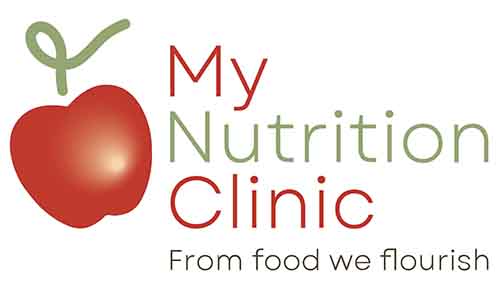Food intolerances
Could this be a food intolerance?
Could this be a food intolerance?
Food allergies and food intolerances are two very separate things, yet are easily confused. Knowing the differences between them determines how best to diagnose and treat them.
A true allergy involves activation of the body’s immune system and usually occurs immediately after exposure to the food causing the allergy. Only 5 per cent of people have true food allergies and most of these are first seen during childhood.
Food intolerances are much more common than food allergies, though much harder to identify. Signs of the intolerance may need several days of exposure to the food substance before symptoms are seen; making it very hard to identify what is causing the problem.
Unlike allergies and coeliac disease, intolerances don’t involve the immune system at all. They are triggered by food chemicals which cause reactions by irritating nerve endings in different parts of the body. They cause a reaction in a similar way that certain drugs can cause side-effects in sensitive people. Food intolerances can occur at any age and symptoms can include (Skypala 2015, ASCIA 2014):
- Hives
- Swelling
- Eczema
- Flushing
- Hypotension
- Stomach pains
- Diarrhoea
- Asthmatic reactions
- Fatigue
- Depression
- Headaches/migraines
- Nasal congestion
How can a dietitian help?
There are several groups of foods that can cause problems and a dietitian will advise you on which groups of foods to remove and how to identify the individual foods and amounts that you can tolerate. Typical food chemicals that can cause problems are salicylates, amines and glutamate. These groups of foods are found in a wide variety of foods – including many ‘healthy’ foods.
An elimination diet is where the foods identified as the most likely to cause your symptoms are removed from the diet for few weeks. If symptoms improve during that time, the dietitian will re-introduce particular foods in controlled amounts and time intervals to determine which foods trigger your symptoms. Diets that involve the removal of multiple food chemicals have great potential of nutrient deficiencies and therefore guidance from a specialist dietitian or allergist is recommended.
Diagnosis and tests
To correctly identify a food intolerance, an allergy and intolerance dietitian will guide you through an elimination diet and food challenge. This is the only accurate way of identifying the foods that are causing your symptoms and how much of an individual food that you can tolerate. This process can take between 3 to 8 appointments (depending on the complexity of your intolerances). Appointments are recommended every 2-4 weeks until the elimination and re-introduction and challenge phase is complete which can take between 2-4 months.
DAIRY
The most common symptoms of a dairy intolerance are gastrointestinal and typically include:
- Abdominal pain
- Bloating
- Diarrhoea
- Gas
- Nausea
This intolerance is the result of having very little or none of the enzyme lactase which breaks down the milk sugars (lactose) in these foods. If a food can’t be broken down properly then it can’t get absorbed by the body and so it keeps travelling down the digestive tract until it gets to the large intestine where it attracts water and gets broken down by the gut bacteria (which produces wind). This together leads to a whole lot of discomfort. What is confusing about this food intolerance is that most people find they can tolerate some dairy foods but then something pushes them over the edge and sends them running to the bathroom. A Dietitian can help you quickly identify your current tolerance levels as well as help you increase you tolerance over time. Most people have the capacity to increase their lactase production by gentle increases in their intake. The old saying ” use it or lose it” really applies when it comes to a dairy/lactose intolerance.
FRUCTANS (NOT GLUTEN)
Sometimes people feel better when they remove gluten but they don’t have coeliac disease.
Common symptoms may include:
- Bloating
- Abdominal pain
- Diarrhoea or constipation
- Headaches
- Fatigue
- Joint pain
- Skin rash
- Depression or anxiety
- Anaemia
This has been termed ‘non coeliac gluten sensitivity’ but it has been reported more recently through research that these people may be sensitive to the fructans in foods and NOT the gluten. Fructans are found in wheat so it isn’t surprising that when you remove the wheat from the diet (through gluten-free products), people start to feel better. Fructans can only cause gastrointestinal symptoms so it thought that alpha-amylase trypsin inhibitors (ATIs) may provide an explanation. ATIs are plant-based proteins that makeup not more than 4% of the wheat proteins. Mouse studies have shown that ATI’s interact with the immune system and promote inflammation.
If you have any of these symptoms and you have ruled out coeliac disease, it is worthwhile speaking to a dietitian to identify how to change your diet to feel even better!
FODMAPS (FERMENTABLE OLIGO-, DI-, MONO-SACCHARIDES AND POLYOLS)
Don’t worry about the complicated name – in simple terms, these are a group of carbohydrates that resist digestion until the large intestine where they are broken down by bacteria in your gut and produce gas as a byproduct. Some people are very sensitive to this gas production and experience painful bloating. These carbohydrates can also draw in extra fluid into the bowel causing diarrhoea. People with this sensitivity and symptoms are often diagnosed with IBS.
Fortunately, people are often only sensitive to a few particular foods in this larger group of FODMAPS and can also tolerate a certain amount without symptoms. Working with an experienced dietitian can help you identify the foods and amounts that are a problem for you and get you back to feeling yourself again.
SALICYLATES
Salicylates are natural chemicals found in food. They are produced in plants to protect themselves from pests. Organic foods will have higher amounts of food chemicals to ensure their survival in the absence of pesticides. Salicylates like all natural food chemicals are found in a wide range of foods, including fruits, vegetables, teas, coffee, spices, nuts and honey but they can also be used as food and non-food additives such as toothpaste. Some people are sensitive to these chemicals and can only tolerate small or moderate amounts. Symptoms can include:
- Stuffy nose
- Sinus infections
- Nasal and sinus polyps
- Asthma
- Diarrhoea
- Gut inflammation (colitis)
- Hives
AMINES
Dietary amines come from protein breakdown. There are higher amounts in protein foods (meats, fish, cheese) or as they age/mature and in fruits as they ripen. There are also high amounts in sauces, fruit juices, chocolate, nuts and seeds paste and fermented products. In people who are sensitive to amines, they are not able to break them down properly and they build up in the body. Symptoms can include:
Symptoms of histamine intolerance include:
- Flushing of the skin
- Headaches
- Hives
- Itching
- Anxiety
- Stomach cramps
- Diarrhoea
- Low blood pressure
SULPHITES
Sulfite sensitivity is most common in people with asthma, though people without asthma can be intolerant to sulfites as well. Sulphites are a preservative used in dried fruits, dried coconut, potato products, sausages, all crustaceans (prawns, lobsters and crabs), dessert toppings, cordials, wine and vinegar.
Common symptoms of sulfite sensitivity include:
- Hives
- Swelling of the skin
- Stuffy nose
- Hypotension
- Flushing
- Diarrhea
- Wheezing
- Coughing
GLUTEN
It is great to see that there are so many more gluten-free food options available for people today, thanks to the increasing identification of coeliac disease. This condition is a genetic condition where a person’s immune system will attack and damage it’s own digestive tract when there is gluten from food in there. Gluten is a protein that is found in barley, rye, wheat and can be found in oats (due to contamination during processing).
FRUCTOSE
Fructose is a simple sugar found in fruit, corn, honey and table sugar. Usually, fructose is well absorbed and digested by the body but some people have a more limited ability to absorb fructose from food. The undigested fructose then travels to the large intestine and is broken down by gas-producing bacteria which results in bloating, reflux, abdominal discomfort, wind and diarrhoea.

